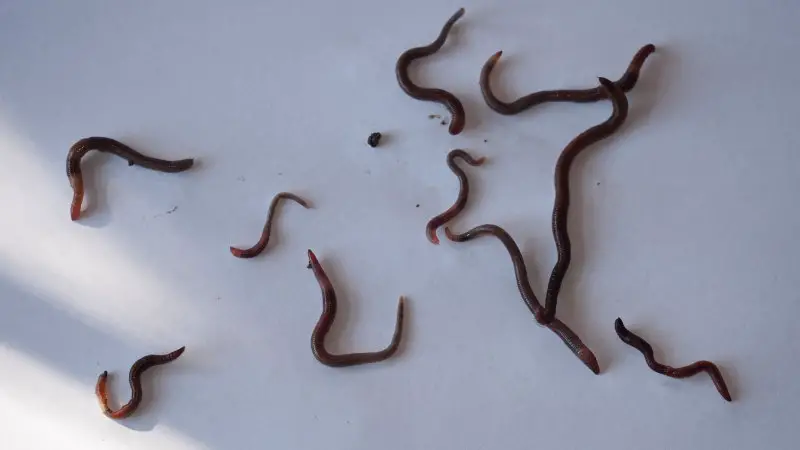The two best ways to catch trout on a worm are drifting the worm beneath a float, or bouncing them along the bottom weighed down with a few pieces of split shot. Float fishing allows trout to be targeted which are feeding within the water column, while bottom bouncing works well on trout which are holding deep.
No matter what trout bait, you decide to fish with. Presentation is always more important than the bait itself. Presenting the bait, in such a way that it looks natural, but also within the trout feeding arc would bring many more fish to the net than just random casting. Good presentation is crucial when targeting wild or holdover trout, stock trout are somewhat more forgiving.
In still water, some anglers will use a ledger rig, with a large sinker. They just let the worm rest stationary just of the bottom and wait. This is a very relaxing style of fishing and can be effective if deployed in areas where trout are likely to concentrate. I will never use this method of fishing in a small stream or river simply because the trout are not mobile enough.
How to hook a live worm
- – Always keep your live worms cool. Store them in the shade, or better still in a cooler. A live wiggly worm is more enticing to trout than a dead one.
- – Before picking up a worm, rub a little dirt on your fingers. This not only hides any scents of insect repellent or sunscreen but also makes holding onto a wiggly worm easier.
- – If the worm is too large, consider cutting it. Although, a whole worm will survive for longer than half. So only cut them if you are certain they are too large for the trout you are targeting.
- – Thread the hook point through the worm. There are several ways this can be done. The most popular is going right through the head end and out again. For even more movement consider rigging it whacky rig style with the hook through the middle of the worm.
- No matter how you decide to hook the worm, you want it to be long and wiggly. Some fishermen bunch the worms up into a little ball, while it stays on the hook better, due to the lack of movement that presentation is less effective at catching trout.
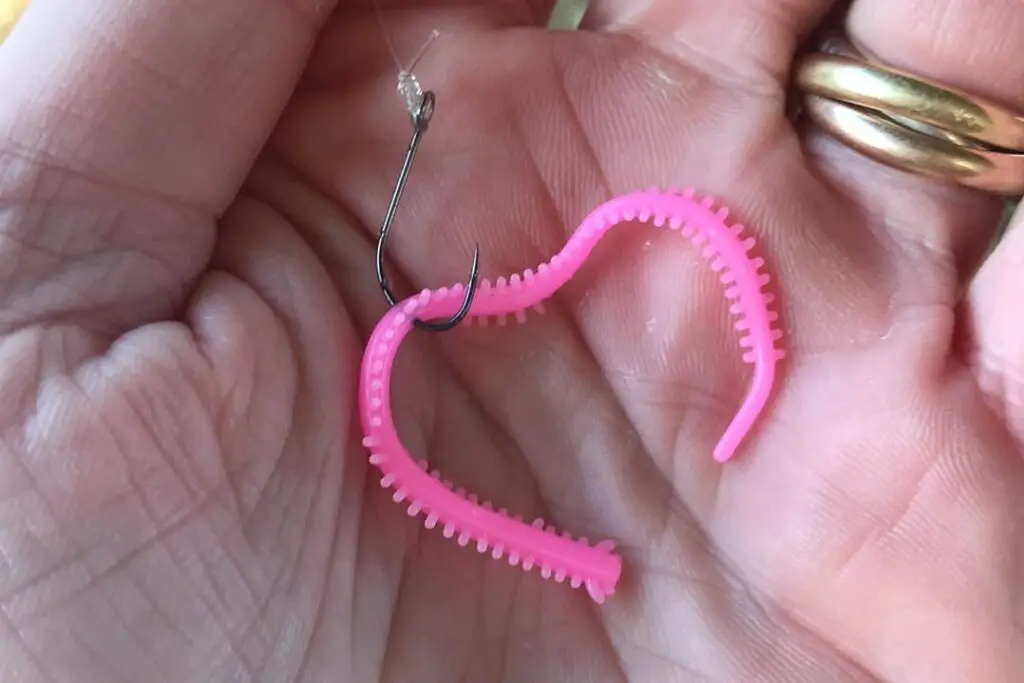
What is the best type and size of hook for worm fishing for trout?
The best general purpose hook size for trout is #10 or #12. I use this size for a whole range of different baits and worms are no exception.
If you plan on fishing a long, chubby nightcrawler a #8 hook might be more appropriate.
I use a whole range of different hooks, but I often return to the Daiichi 1150 hooks. The quality is good and I feel the lighter wire construction allows for a more natural presentation.
What is the best type of worm for trout fishing?
There are thousands of species of worms, but anglers typically generalize them into two categories. Dew Worms (nightcrawlers), which are long, fat, and typically sold at bait stores, and the smaller, common garden worms.
When selecting a worm, it is best to first consider the size of the trout you are planning on targeting and the clarity of the water.
A fat 10-inch dew worm, in all likelihood, is too much for a small stock trout to handle. So for general trout fishing, I prefer to use common garden worms about 2-3 inches long. Red worms are usually ideal but the species does not matter.
There are exceptions, if the water is dirty, larger dew worms can be easier to see. Also, if the average size of the trout is big, then a dew worm might just be a better size snack. When night fishing for trophy size brown trout the bigger the worm the better. They can handle it.
There is also plenty of plastic worm imitation. They do work, but when the fishing is tough and the trout cunning it is hard to beat the real thing.
How to fish a worm beneath a float?
One of the best ways to fish a worm is to suspend it beneath a float or bobber. That way you can drift the worm about a foot off the bottom in the exact spot trout usually feed.
There are many variations to this rig and will describe a couple of variations below.
The first rig I like to fish in still water where there is not much current. It is very simple and minimalistic and only requires a float and a few pieces of split shot.
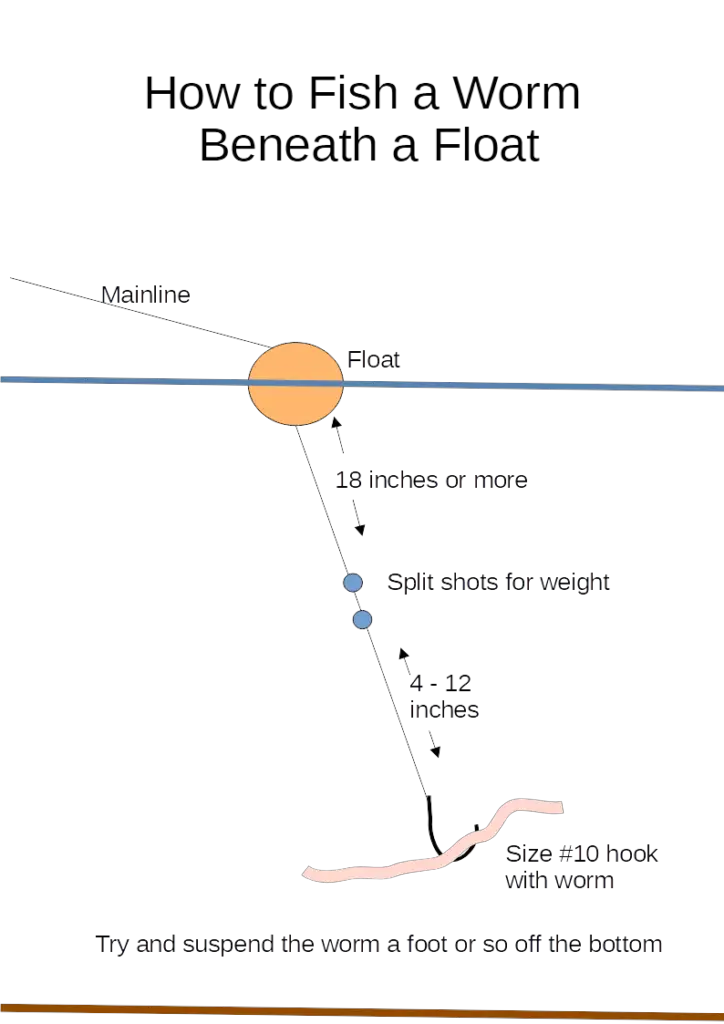
Simple rig For worm fishing in moving water
This second rig, I prefer to use in moving water. Perfect for drifting down foam lines at the head of pools.
The idea is to position the majority of the weight (split shots) towards the float (Can use more or heavier shots towards the float). This weight close to the float helps slow it down. This allows the bait to drift downstream faster allowing it to reach the trout before the split shot and float.
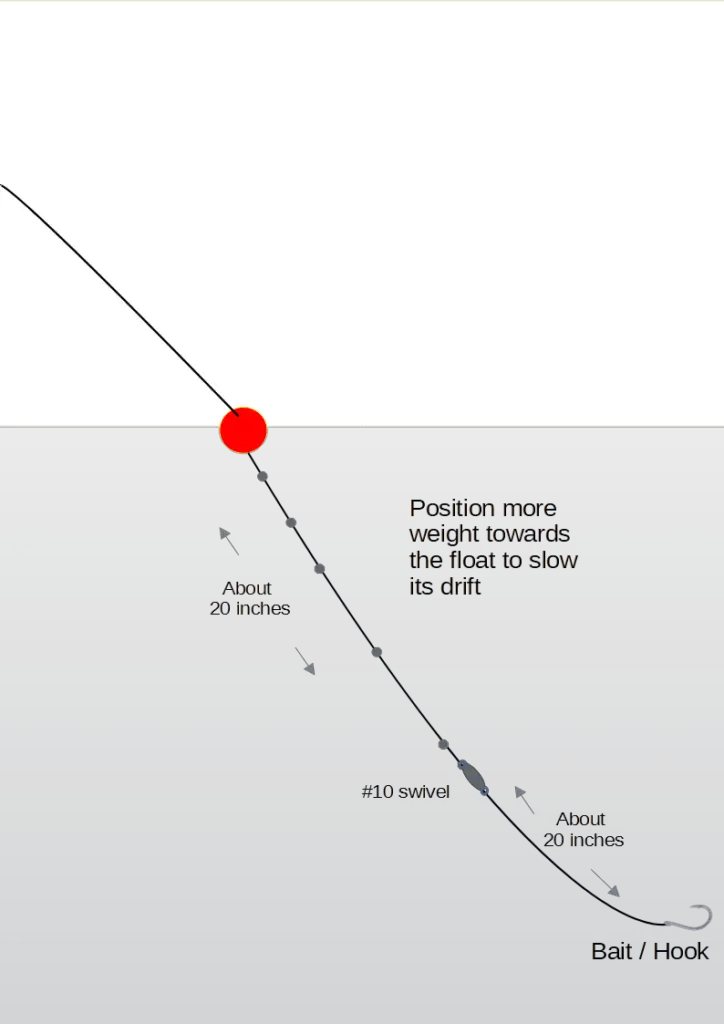
How to troll a worm?
Trolling with a garden worm might not seem like a natural presentation but it is still rather effective. In the diagram below I will show a simple rig that is perfect for trolling with a worm.
When trolling worms, I advise going as slow as possible. Give the trout plenty of trout to inspect and consume its meal.
If you remove the swivel, it is also possible to gently cast and retrieve with this rig.
It is possible to use any free running ball or egg sinker. In shallow water, I use the lightest sinker I can find. A heavier sinker can be used when the trout are holding deeper in the water column.
Simple worm casting / trolling rig
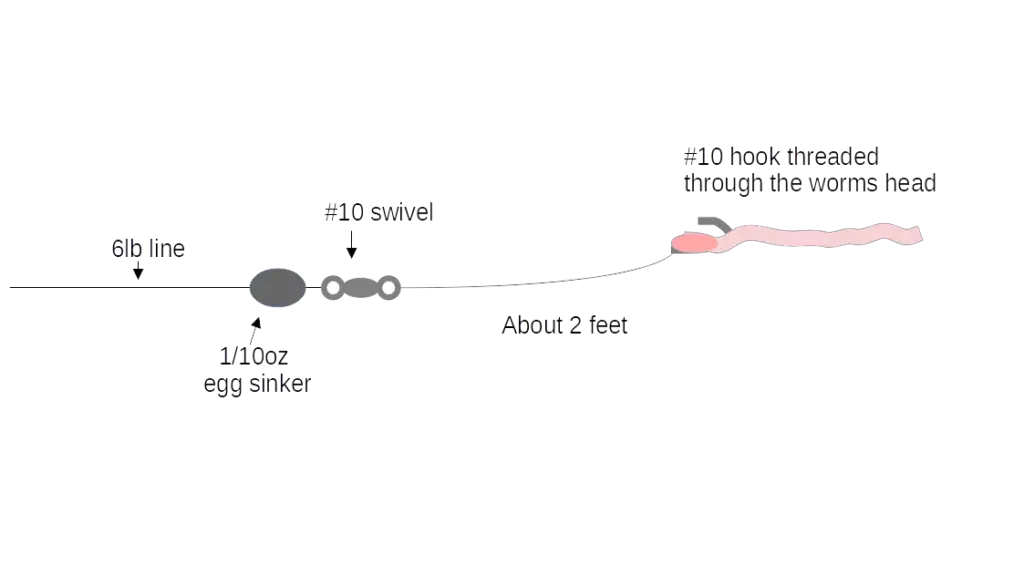
Does adding a worm to a lure catch more fish?
Some anglers think the secret to catching more trout is to add a little piece of worm to the rear hooks of a lure.
This does not really help, because the trout are attracted to the vibrations and appearance of the lure rather than the scent, and a little piece of tangling worm is not enough to get them to strike.
Adding a piece of worm, might encourage some other species of fish to strike. This can be seen as either desirable or not depending on the species.
What can be effective, is to trail a small plastic worm a foot or so behind a lure. Trout are often attracted to the flashy lure, but decide not to strike, but rather than wasting energy they opportunistically grab the small worm trailing behind.
Best time and when to fish a worm bait?
Trout can and do eat worms almost any time of the year and in any type of water. It does not matter if it is day or night, deep shallow, swift or still, dirty or clear. Trout love eating worms.
While trout are not fussy, there are sometimes worms that work better than any other bait. These are the best times to fish worms.
1) Just after rain is a great time to fish worms. After a rain event, many worms leave their barrows and end up in the rivers and streams. The trout know that and are likely to be searching for them.
Fishing a worm bait just after a fresh, when the water levels are still high can be very productive.
If the river is in a dirty flood, I advise against fishing worms. At least natural worms. In such conditions, trout have difficulty seeing, so for any chance of success a bait must be big, bright, contrasting, and loud.
Trout hunt by vision, and by sensing vibrations. When the water is dirty, they can not see well. So they depend more on their other senses, so a bait that vibrates more works better. This is not a drifting worm.
In a dirty lake or Stillwater, the wiggles of a live worm can be enough to grab the attention of nearby fish.
2)In warm water trout still eat worms. It is no secret that trout are difficult to catch when water temperatures are high.
But, if you want to catch a few stock trout for the table fishing a worm is an excellent way to tempt an otherwise reluctant trout to feed.
During the hot summer months, many trout fishermen target other species. Not only are trout difficult to catch, but any released trout has a much lower chance of survival. So unless you are fishing for the table, trout fishing in warm water conditions should be avoided.
3) In very cold water. When the water temperature gets very close to freezing. Trout can be very hard to catch.
They do not have the energy to chase after lures, and nymphs and other small aquatic insect life do not provide enough calories to be worth eating. But a fat, juicy worm is both energy dense and easy to eat.
4) At the change of light Most of the year trout are more active in the evenings and first thing in the morning. This is a prime time to go trout fishing, so naturally, it is also one of the best times to fish worms.
Where are the best locations to catch trout on worms?
Trout love eating worms and will eat them almost anywhere.
This might come across as quite obvious, but you have to fish the worm near where trout are likely to be feeding. This can change based on the time of year, but also the time of day. In this section, I will share three of the best locations for worm fishing.
1) At the head of a pool. When fishing in a small stream or river, it is a good idea to cast the worm slightly upstream and allow it to float down with the current. Trout often wait to pounce on any food floating past.
2) At river mouths, If you are fishing a lake or even a large river. One of the best places to fish worms is where another river or stream enters. I will go as far to say, that stream mouths are the best place to fish worms on a lake. Simply stand on the edge of the stream, and cast out gently. Then drift the worm slowly out into the lake. I prefer to fish my worms beneath a float when targeting stream mouths.
3) Muddy Creeks and streams. Streams and creeks which have grassy earth banks are present the best worm fishing. That is because a large number of worms fall into the creek at night or whenever it rains. Steams with stony, gravel, or sandy banks do not get as many worms washed into them so the trout are often less interested in them.
Are real worms better than plastic worms for trout?
Plastic or artificial worms should not be seen as a less effective alternative to real worms. They are also highly effective at catching trout. They are also much less messy to use and stay on the hook much better. Because plastic worms stay on the hooks much better, they can be actively fished to give of even more trout attracting vibrations.
Plastic worms can usually be fished in lure only water, while natural worms can only be used in bait fishing waters. So having a few packages of artificial worms is a good idea.
I find that plastic worms work better in moving water than in lakes. That is because the trout have less time to inspect the worm before it gets washed downstream. They have to react fast.
Another advantage of plastic worms is that they come in a wide selection of colors. This can make them even more effective especially if the water is a little dirty. A bright pink or orange worm is easier for the trout to see.
If you only occasionally plan to fish worms, plastic worms can be more economical. A single packet can last several seasons, while the life expectancy of worms in a small pootle is a couple of weeks at most.

